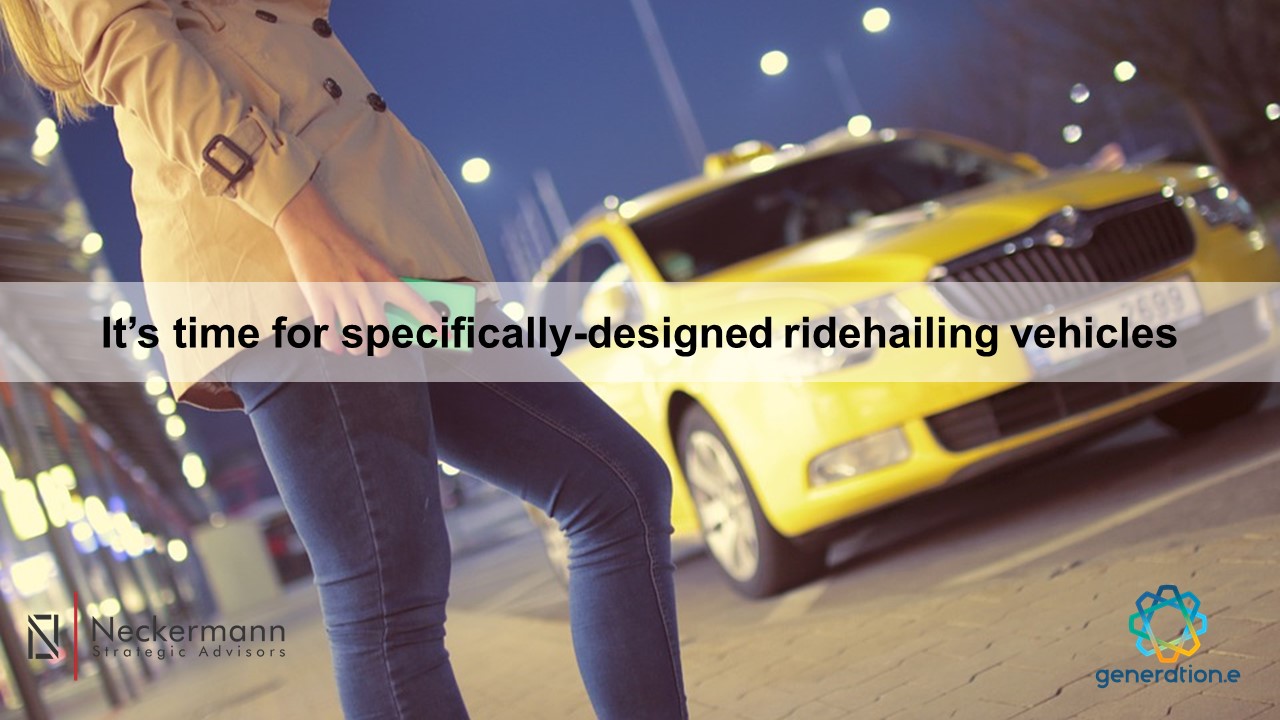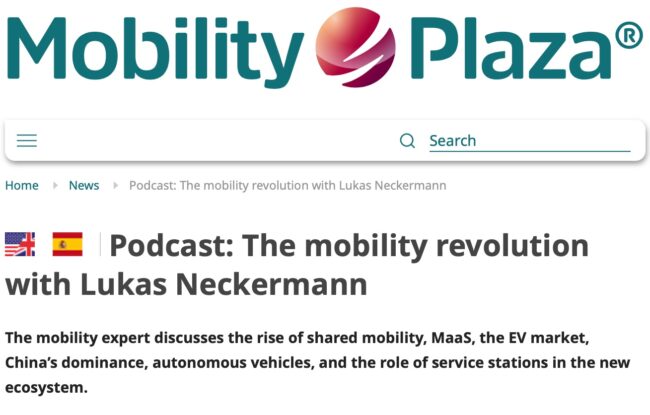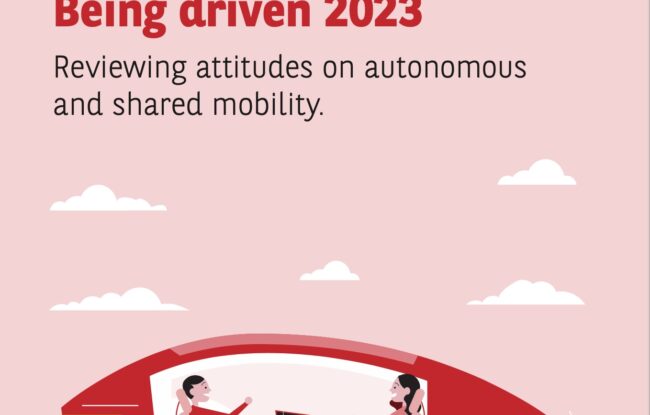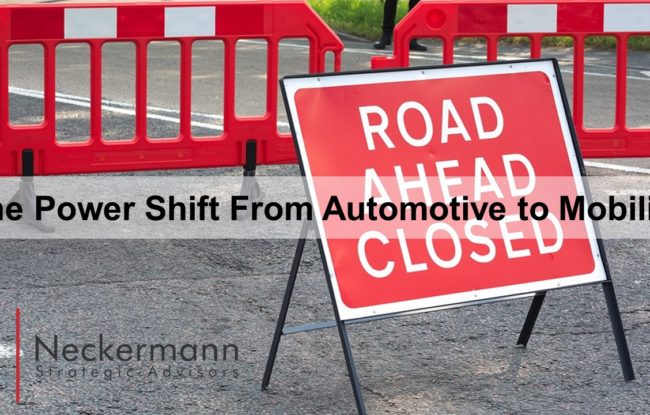This article was first published by Generation.e on 11th of June 2020 for the preparation of the Smarter Mobility Europe Live
Carsharing, ridehailing and -pooling have been hit hard by COVID-19. Many companies are temporarily shifting from moving people, to moving literally anything else — medical supplies, food, even packages. But every crisis is a test, and an opportunity — a test of flexibility and resilience, and an opportunity to rebuild businesses for the future. Powered by the desire to build a more intelligent mobility environment, Generation.e will bring together decision-makers from both the public and private side at Smarter Mobility Europe to explore how can we leverage the impacts of COVID-19.
In the case of ridehailing, “rebuilding”, we must include the vehicle itself. Ridehailing companies over the world have taken quick and aggressive action to protect their drivers, their passengers, and their revenues. Most have provided protection kits for drivers and offered them to work on alternate gigs, such as food delivery. With that, they’ve on the one hand expanded their offering, while on the other hand offloading unprofitable business models (such as micromobility).

We need shared-specific vehicles
The crisis shines a spotlight on a more specific, long-term issues as well. Ridehailing is almost a decade old now, but most of its vehicles are still built for the driver, not the passenger. Why do dedicated, custom-designed ridehailing vehicles still not exist? The volume certainly supports it, and the thought is not entirely new — indeed, Neckermann Strategic Advisors has floated the idea before — even five years ago, noting that “electric autonomous vehicles will lead to a sheer revolution in transport design,” because “shared vehicles will have over fifty percent utilization rates (i.e. five times more mileage driven per year), significantly shifting the product design specification toward durability and utility.”
We firmly believe there’s a market for bespoke (custom-designed) shared vehicles, as:
- Dedicated shared-mobility vehicle concepts could provide better integration between moving people and goods in urban areas
- The passenger/driver convenience and experience can be enhanced, leading to an increased end-user utilisation rate and driver retention.
- Safety will be a major concern post-COVID19. We need to take the bull by the horns.

Demand for custom-designed sheetmetal:
There are over 220k private hire vehicles (2019) in England alone. Just in London, barely among the top-25 most populated cities in the world, there are around 50,000 registered private-hire vehicles (and over half are from a certain provider of hybrid cars). In similarly populated New York City, there are approximately 100,000 private hire vehicles, also called For-Hire-Vehicles (FHV); many will never see another application outside of passenger transport. Depending on the study, the growth rate in ridehailing is consistently 10–20%. Globally, we are surely talking about millions of FHVs, with a utilisation rate (and thereby a replacement rate) far above the normal ratio for a private vehicle. The market represents hundreds of thousands of possible vehicles to sell per year.
For a shared vehicle, branding, design, personalisation possibilities and so on are worth almost zero. Does this create an entry door for new players manufacturing white label vehicles?
Why haven’t OEMs jumped at this? Key issue is likely that branding, design and any other fancy personalisation options are mostly irrelevant — only volume, cost, driver comfort, and to a lesser degree, passenger comfort plays a role. People simply do not care about the vehicle itself. Nobody orders an Uber because they are happy to ride in a Prius. Simply put: OEMs don’t like to bend white-label, low-margin sheetmetal.
Could it be a perfect entry door for new producers? Absolutely! In fact, as early as 2015, Neckermann Strategic Advisors have suggested that Foxconn, Amazon, Huawei and others could get into the game. A half-decade later, the time seems right.
What would an OEM bring to the table? Intuitively, the maintenance, repair and replacement requirement of shared-mobility vehicles is high, which could be an additional revenue stream for shared vehicle manufacturers. These needs, especially around after-sale services are still an area that OEMs excel at. While your private car stays 95% of its time parked, a Uber driver will be busy 60% of the time (stats from NYC).
The marriage between people and goods
Pushed to explore unfamiliar urban logistic territories, ride-hailing companies are now using one of the most useless spaces of their vehicles: the trunk (‘boot’ to UK-readers)!
Let’s imagine a world where specifically designed shared-mobility vehicles are running around in our city centres. What should they look like? In the midst of COVID-19, mobility operators are being pushed to explore unfamiliar urban logistic territories are now using one of the most useless spaces of their vehicles: the trunk! So the virus gives us a fantastic opportunity to reflect about a better integration between moving people and goods in our cities.
Consider the empty volume from the FHV trunks moving around every day in a city like London. It is equivalent to over 230 22-ton trucks…
Most of the time, when we use a ride-hailing service we put nothing in the back of the car. And if you do, it is most likely a cabin suitcase… When we really need space, we order a Van or an Uber XL. Let’s assume that amongst the 50,000 ridehailing vehicles in London, 40,000 are “normal” vehicles (no van, no luxury sedan…). To the roof, the Toyota Prius has a trunk volume of over 500L (over 20 cubic feet).

The cumulated capacity of these 40,000 regular ridehailing vehicles represents some 20,000 cubic meters that moves around the city, and the clock, almost empty. A 22-ton truck has (on average) a capacity of 85 m3. Just for London, the private-hire vehicle fleet drives around the volume capacity of 235 empty trucks!
With the underused volume, can’t we think about features to improve either the profitability of each ride, the driver comfort or the passenger convenience and experience?
The last-mile challenge, enhanced by working-from-home and online orders, is increasing the pressure on our urban mobility capacities. Fantastic apps (Via, Trafi, etc…) are able to intelligently plan vehicle journeys. Can’t we more effectively use the underutilised space in the (way) back of the car as well — not just because of COVID-19, but permanently? Not only would we reduce congestion, but it would improve the profitability of each ride, the driver comfort or the passenger convenience and experience.
Passenger/driver experience
Let’s have a look inside the car now. Think about the front passenger seat — what do we need it for? Ocado drivers and black-cab drivers don’t need it, why would the professional Prius driver? Perhaps the space can be used for heated (or cooled) storage for food and groceries?
What about the GPS screen — which is basically just used as space for a smartphone, in order to use Waze? What about the passenger vents, which are used as pencil storage?


The front passenger seat always folded, the GPS screen used to fix the phone supports or the multitude of smartphones on the driver dashboard are examples of discrepancies between the shared vehicles and the driver/passenger needs
One of the challenges faced by ridehailing companies is to find and retain drivers. Especially during COVID-19, together with taxi chauffeurs or public transport drivers, we must consider them amongst the heroes at the front line of the crisis, keeping our world moving.
Let’s respect their contribution during this unprecedented time. And let’s focus interior research on the only two people that matter: the driver in the front, and the passenger in the back. And when we have done that, let’s consider how goods can be transported as well.
Safe rides
Even before COVID-19, some ridehailing providers have made “safety” a key issue, but even their proposition doesn’t go far enough today. Safety has become a key issue. To address this, drivers have been installing sheets of plastic to protect drivers and passengers, a surely sensible solution for both the drivers and passengers that replicates what is installed in London’s (custom-built) black-cabs, and thereby provides both privacy (data and physical) and safety (no assault, no virus).
Bespoke vehicles could accomplish this and more. During SME LIVE, speakers and experts will reflect on this and more: Custom cabs for longer trips? Snacking cabs for lunchtime mobile meetings? Can the passenger pods be multipurpose, yet still cost-effective and comfortable? Where are the limits? Let us know what you think and let’s discuss between the 1st and the 3rd of July!
During Smarter Mobility Europe LIVE on 1–3 July, we will build upon these recent game-changing transformations to go beyond their immediate results. Through a series of case study presentations, technology and solution demos, looking to the future panels, and Chatham House roundtables, we will advance the understanding of which barriers need to be overcome, and which opportunities can be leveraged in order to develop ever more sustainable mobility experiences. Incredible progress is already being made, it’s important that we are able to share knowledge and of success and failure, inspire improved ideas, and ensure a plan is in place for the new Europe we are ‘cycling’ towards.




